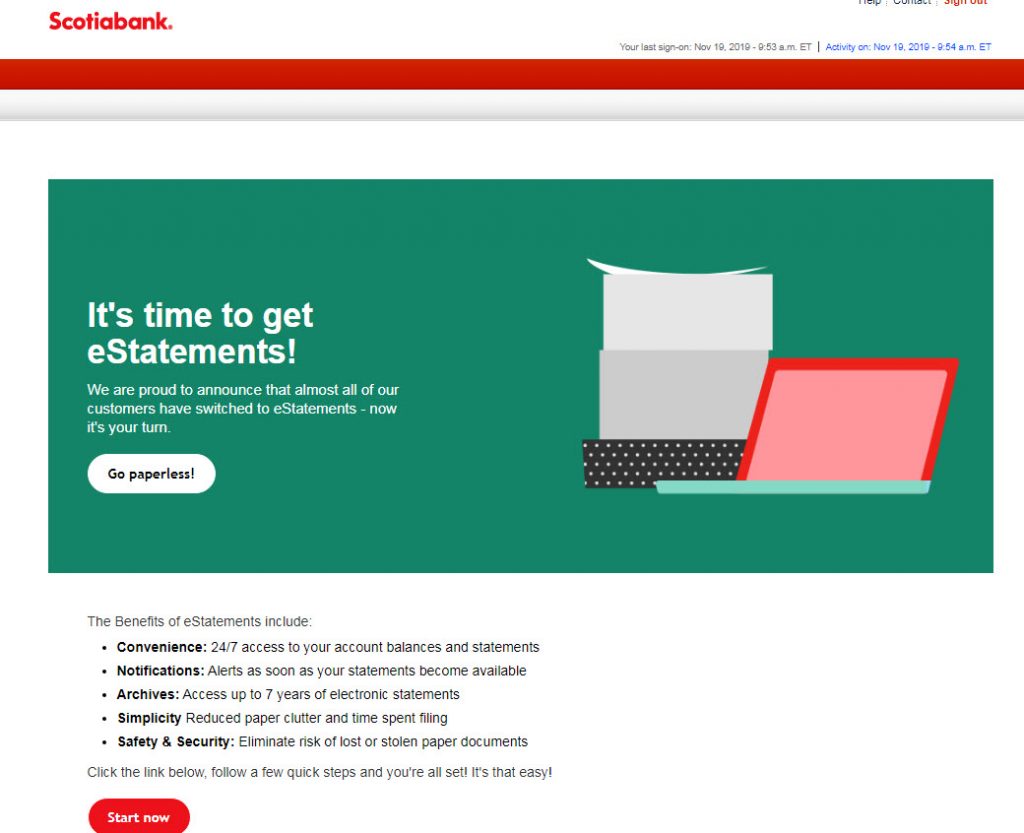Banks have now spent over 30 years getting us out of the branch and onto using ATMs. They’ve also spend almost a generation slowly getting us to use online banking. Those are certainly big changes to the traditional banking model. But when they don’t see you in the branch, it’s much more difficult to sell you products or services.
On the one hand, that’s great news. You can’t be sold something you don’t need, or that’s not suited for you, if you don’t talk to the commission based people in the bank. On the other hand, banks’ profits keep reaching new highs of billions per quarter. Well, that’s because the service charges increase twice a year now and we just take it without firing them.
But how long can this go on? Here are some insights from the founder of a new U.S. online bank called Bankmobile. They’re U.S. stats, but we’re not much different here in Canada:
The average person goes into a branch twice a year, but does 20-30 transactions a month. What’s even more stunning is that the average bank branch opens between 40 and 50 new accounts in a year! That’s it!
The average online banking customer is 27 years old. And I’d bet most of them have never been anywhere else but online. I recently talked to a 20-something who had never seen a cheque, never had a cheque book, and had no idea what they are, and what they do. He’s not alone – an entire generation has direct deposit and online everything else.
The millennial generation of 35 and under are actually way smarter than us older people who deal with banks. As of an hour ago, online bank Tangerine (bought by Scotia from ING) has a basic savings account rate of 1.1% vs. TD of zero interest until you reach $5,000. Then it’s 0.5% – same as the other banks. So the online banks are more than double the rate and don’t grab your first $5,000 without paying you a cent of interest.
In the U.S., the branch network has shrunk by 10% over the last few years and is expected to shrink another 20% in the next three. The largest nine Canadian banks have 6190 total branches – no change since 2012. Many fewer visits, but still an incredibly expensive branch network. Small wonder they have the highest service charges, up them twice a year, and literally half the savings returns compared to online banks.
Maybe the under 35 generation is helping us all out by avoiding the physical banks in favour of online banking at vastly lower fees and significantly higher savings rates.
George Boelcke – Money Tools & Rules book – yourmoneybook.com

